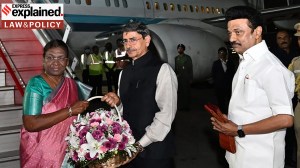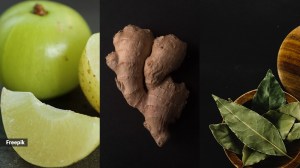Nobel Peace Prize for ‘green militant’
Wangari Maathai, the Kenyan firebrand who mobilized the women of Africa in a powerful crusade against deforestation called the ‘‘G...

Wangari Maathai, the Kenyan firebrand who mobilized the women of Africa in a powerful crusade against deforestation called the ‘‘Green Belt Movement,’’ will receive the Nobel Peace Prize for 2004. Friday’s announcement, by the Norwegian Nobel Prize Committee, makes her the first African woman to receive the $1.3 million prize, which is generally regarded as the world’s highest tribute. Among past laureates are Jimmy Carter, UN Secretary General Kofi Annan, Mother Teresa, Nelson Mandela, Lech Walesa, the Dalai Lama and Martin Luther King.
Maathai, feminist, environmentalist and crusader against corruption in Kenya, is now her country’s Deputy Environment Minister. Typically, the speculation about who would win this year’s prize was all wrong, with most of it centering around Director General Mohamed ElBaradei of the International Atomic Energy Agency. ‘‘I am absolutely overwhelmed,’’ said Maathai, 64.
The award will be handed out in Oslo on December 10. While Maathai has not been widely known to the general public, she is a legend among global environmental activists and feminist leaders alike and a presence at international environmental conferences. She has been described variously as an ‘‘ecofeminist,’’ ‘‘ecowomanist’’ and ‘‘Kenya’s Green Militant.’’
The impetus for Maathai’s movement was deforestation in Kenya, a process that has taken 90 per cent of the country’s forest over the past 50 years. In 1978, Maathai, then a US-educated college professor at the University of Nairobi, suggested the planting of trees as a way to help rural women survive the decrease of firewood. The movement spread across Africa, and was responsible for planting over 30 million trees.
In 1989, the deep-voiced and statuesque Maathai led a one woman-charge against the autocratic government of Daniel Arap Moi, the former president, when he wanted to build a skyscraper and six-story statue of himself in gritty Nairobi’s only public green space. She lost her case in court. But because of her protest no financiers were willing to work on the project. Today, that area of the park is called ‘‘Freedom Corner.’’
—LAT-WP
Photos


- 0119 hours ago
- 029 hours ago
- 0319 hours ago
- 0419 hours ago
- 0519 hours ago





























